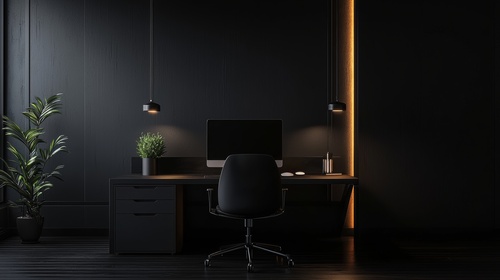Ergonomics and accessibility are paramount in the workplace, influencing everything from productivity to employee well-being. Office storage solutions like cabinets and shelving are critical in maintaining an organised and efficient environment. With the right approach to office cabinets, businesses can create a space that maximises comfort and minimises the risk of injury while enhancing accessibility for all employees.
Designing for Comfort and Efficiency
The primary goal is to reduce physical strain on employees. This involves designing office cabinets storage that can be easily accessed without excessive bending, reaching, or twisting. For instance, frequently used files and supplies should be stored at a mid-level height, ideally between hip and shoulder level, to facilitate easy access. Drawer handles and cabinet doors should be designed to operate smoothly and effortlessly, which can help prevent muscle strain and fatigue.
Adjustability and Flexibility in Storage Solutions
Adjustable storage solutions are essential to accommodate a diverse workforce with varying physical capabilities and preferences. Features such as adjustable shelving heights and modular components that can be reconfigured based on specific needs make storage more user-friendly and ensure it can evolve with changing office dynamics. Such flexibility improves usability and extends the storage system’s lifecycle, making it a cost-effective solution for dynamic business environments.
Enhancing Accessibility Through Thoughtful Design
Accessibility is another critical aspect, ensuring that all employees, including those with disabilities, can use the facilities effectively. This includes providing clear floor space in front of units for wheelchair users to access and positioning storage elements easily reachable from any height or angle. Additionally, tactile labels and varied colour coding can help visually impaired employees navigate areas more independently.
Integrating Technology for Improved Usability
Incorporating technology can significantly enhance both ergonomics and accessibility. Electronic systems that allow cabinets to be opened and closed with a button can dramatically reduce the physical effort required. Similarly, implementing voice-activated systems can help those with mobility or visual impairments to access files and materials effortlessly. These technological enhancements not only make storage more accessible but also help create a more inclusive workplace.
Optimising Space Utilisation for Maximum Accessibility
Efficient space utilisation is critical in creating an accessible and ergonomic office environment, and designing it for the best available space enhances workflow. It guarantees that all workers have equitable access to essential resources regardless of their physical abilities. Thoughtful placement of cabinets and shelves and strategic layout planning can eliminate clutter and reduce the need for excessive physical movement. This setup helps prevent workplace injuries and boosts productivity by ensuring that essential tools and documents are within easy reach for everyone. Additionally, strategically placed storage solutions can streamline office operations, allowing smoother transitions between tasks and reducing unnecessary downtime.
Prioritising Safety in Storage Design
Safety is a paramount concern when designing office storage systems. Ensuring the units are stable and securely anchored can prevent tipping, a common hazard with freestanding, top-heavy, or improperly loaded cabinets. Also, choosing designs with smooth edges and soft-close mechanisms can significantly reduce the risk of injuries such as cuts or pinched fingers. By prioritising these safety features, businesses can create a safer office environment that minimises risks and protects employees from potential accidents associated with storage solutions.
Implementing ergonomic and accessible office cabinets storage is not just about compliance or aesthetics—it’s about fostering a supportive and productive work environment. By prioritising these aspects, businesses can protect employees from injury, accommodate diverse needs, and create a more efficient and harmonious workplace. Ergonomic and accessible designs are anticipated to gain prominence as more and more organisations prioritise the health and well-being of their employees. This reflects a more significant trend towards inclusivity and concern for employees in the corporate world.


